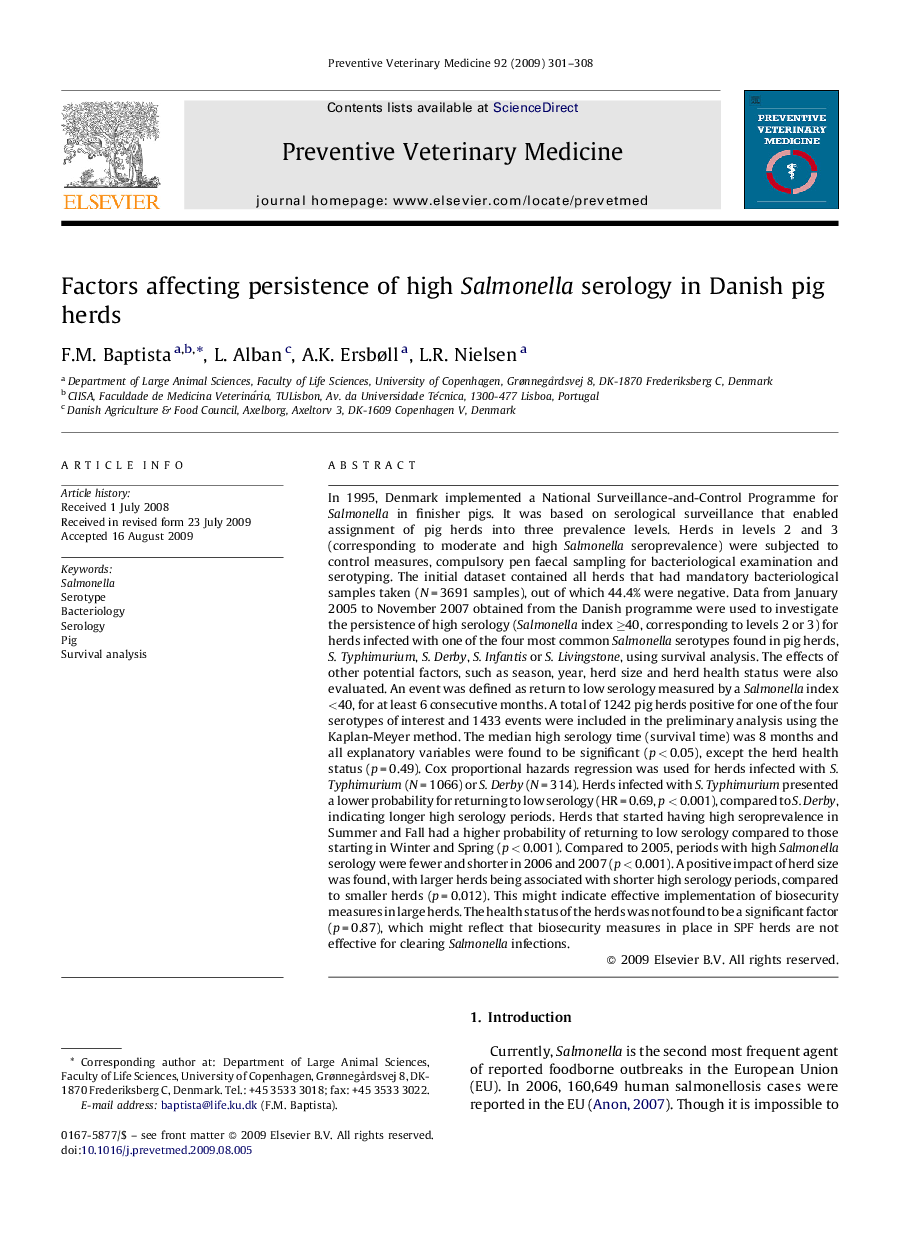| کد مقاله | کد نشریه | سال انتشار | مقاله انگلیسی | نسخه تمام متن |
|---|---|---|---|---|
| 2453141 | 1110075 | 2009 | 8 صفحه PDF | دانلود رایگان |

In 1995, Denmark implemented a National Surveillance-and-Control Programme for Salmonella in finisher pigs. It was based on serological surveillance that enabled assignment of pig herds into three prevalence levels. Herds in levels 2 and 3 (corresponding to moderate and high Salmonella seroprevalence) were subjected to control measures, compulsory pen faecal sampling for bacteriological examination and serotyping. The initial dataset contained all herds that had mandatory bacteriological samples taken (N = 3691 samples), out of which 44.4% were negative. Data from January 2005 to November 2007 obtained from the Danish programme were used to investigate the persistence of high serology (Salmonella index ≥40, corresponding to levels 2 or 3) for herds infected with one of the four most common Salmonella serotypes found in pig herds, S. Typhimurium, S. Derby, S. Infantis or S. Livingstone, using survival analysis. The effects of other potential factors, such as season, year, herd size and herd health status were also evaluated. An event was defined as return to low serology measured by a Salmonella index <40, for at least 6 consecutive months. A total of 1242 pig herds positive for one of the four serotypes of interest and 1433 events were included in the preliminary analysis using the Kaplan-Meyer method. The median high serology time (survival time) was 8 months and all explanatory variables were found to be significant (p < 0.05), except the herd health status (p = 0.49). Cox proportional hazards regression was used for herds infected with S. Typhimurium (N = 1066) or S. Derby (N = 314). Herds infected with S. Typhimurium presented a lower probability for returning to low serology (HR = 0.69, p < 0.001), compared to S. Derby, indicating longer high serology periods. Herds that started having high seroprevalence in Summer and Fall had a higher probability of returning to low serology compared to those starting in Winter and Spring (p < 0.001). Compared to 2005, periods with high Salmonella serology were fewer and shorter in 2006 and 2007 (p < 0.001). A positive impact of herd size was found, with larger herds being associated with shorter high serology periods, compared to smaller herds (p = 0.012). This might indicate effective implementation of biosecurity measures in large herds. The health status of the herds was not found to be a significant factor (p = 0.87), which might reflect that biosecurity measures in place in SPF herds are not effective for clearing Salmonella infections.
Journal: Preventive Veterinary Medicine - Volume 92, Issue 4, 1 December 2009, Pages 301–308